Summary of precipitation datasets
| Name | Snapshot | Source | Domain | Years of record | Timestep | Spatial Resolution | Formats | Input Data | ID |
|---|---|---|---|---|---|---|---|---|---|
| APHRODITE: Asian Precipitation - Highly-Resolved Observational Data Integration Towards Evaluation of Water Resources | 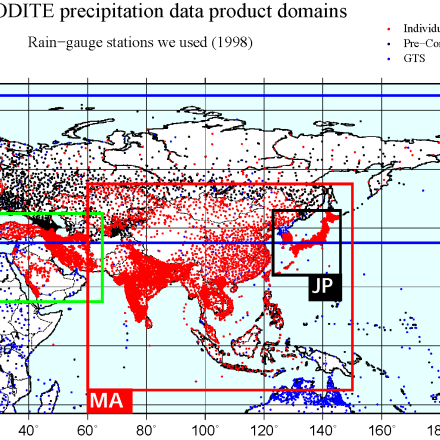
|
Hirosaki University | Asia | to | Climatology, Daily | 0.25x0.25 , 0.5x0.5 (whole Asia), , 0.05x0.05 (Japan only) | ascii, binary, netCDF | 911 | |
| CHELSA high-resolution land surface temperature and precipitation | 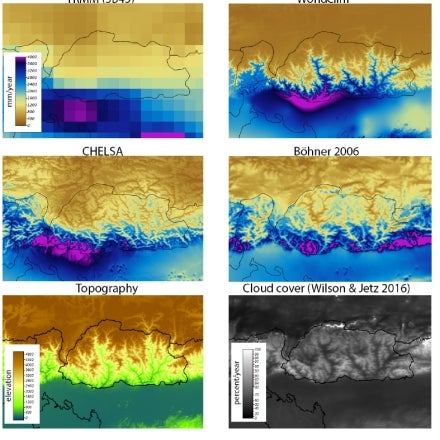
|
Swiss Federal Research Institute WSL , University of Hamburg , University of Zurich , University of Goettingen | Global | to | Climatology, Monthly | 30 arc sec | GeoTIFF | ERA-Interim downscaled with geographic predictors and bias-corrected precip |
1132 |
| CHIRPS: Climate Hazards InfraRed Precipitation with Station data (version 2) | |
Climate Hazards Center - UC Santa Barbara | Global | to | Climatology, Sub-daily, Daily, Monthly, Seasonal, Pentad | 0.05 or 0.1 degree | GeoTIFF, netCDF | microwave & infrared satellite data blended with station data |
1197 |
| CMAP: CPC Merged Analysis of Precipitation | 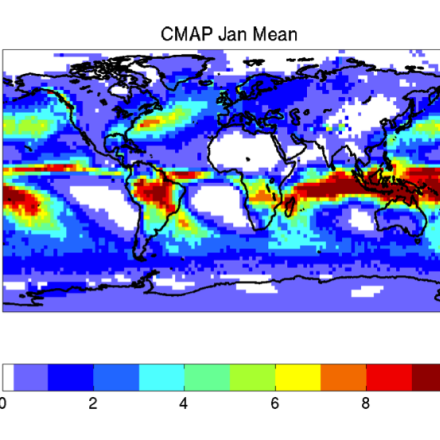
|
NOAA CPC/Dr. Pingping Xie | Global | to | Monthly, Pentad | 2.5 x 2.5 | ascii, netCDF | gague analysis; microwave and infrared observations from polar orbiting and geostationary satellites |
694 |
| CMORPH (CPC MORPHing technique): High resolution precipitation (60S-60N) | 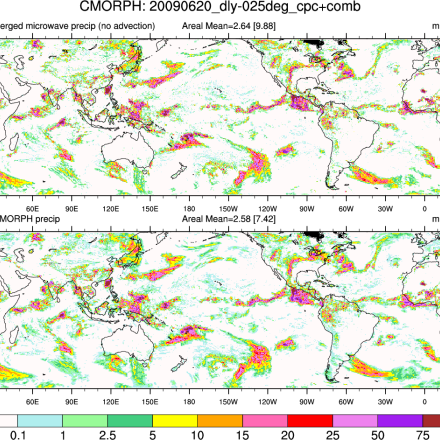
|
Climate Prediction Center/R. Joyce, J.Janowiak | Global | to | Sub-daily, Daily | 0.25x0.25 | netCDF, binary | satellite microwave |
844 |
| CPC Unified Gauge-Based Analysis of Global Daily Precipitation | 
|
Climate Prediction Center | Global | to | Daily | 0.5x0.5 | binary | station gague data |
846 |
| CRU TS Gridded precipitation and other meteorological variables since 1901 | 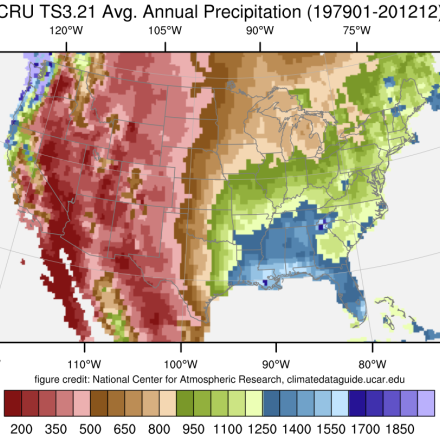
|
Climatic Research Unit (CRU) / Ian Harris, Phil Jones | Global | to | Climatology, Monthly | 0.5x0.5 | ascii, netCDF | ~4000 station records primarily from CLIMAT, Monthly Climatic Data from the World, and World Weather Records |
1006 |
| Daymet: Daily Surface Weather and Climatological Summaries | 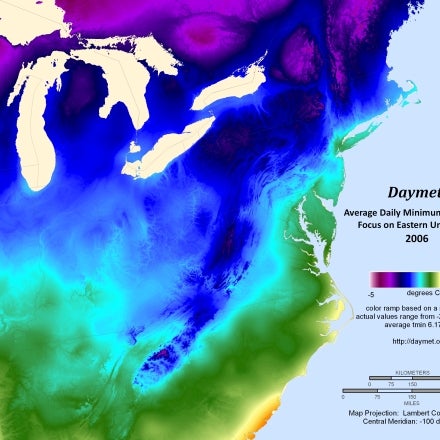
|
ORNL/ Michele Thornton and Peter Thornton | North America | to | Climatology, Daily | 1km x 1km in 2x2 tiles | ascii, GeoTIFF, netCDF | in-situ station observations, specifically from GHCN-daily |
873 |
| E-OBS: High-resolution gridded mean/max/min temperature, precipitation and sea level pressure for Europe & Northern Africa | 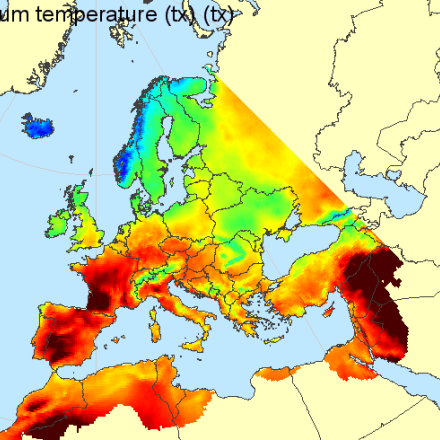
|
Copernicus Climate Change Service , Royal Netherlands Meteorological Institute | Europe | to | Daily | 0.1 x 0.1 degrees | netCDF | station data |
1150 |
| GHCN-D: Global Historical climatology Network daily temperatures | 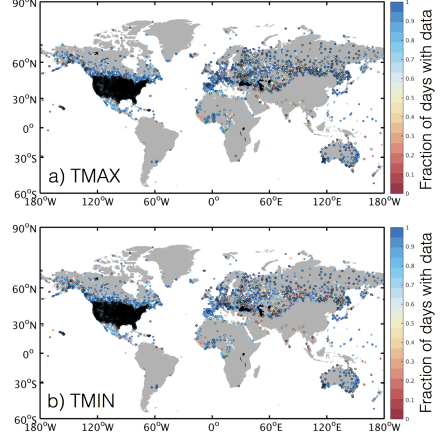
|
NOAA/ NCEI | Global | to | Daily | ascii | 1097 | ||
| Global (land) precipitation and temperature: Willmott & Matsuura, University of Delaware | 
|
U. Delaware / Cort J. Willmott, Kenji Matsuura | Global | to | Climatology, Monthly | 0.5x0.5 degree | ascii, netCDF | land stations from GHCNv2 and a few other sources |
716 |
| Global high-resolution precipitation: MSWEP | 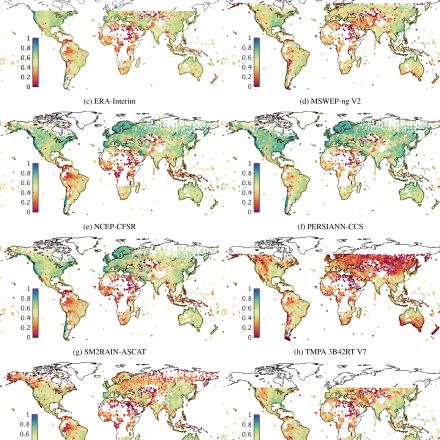
|
H.E. Beck, GloH2O.org, King Abdullah University of Science and Technology (KAUST) | Global | to | Sub-daily | 0.1° | netCDF | gauge, satellite, and reanalysis precipitation estimates |
1200 |
| GPCC: Global Precipitation Climatology Centre | 
|
GPCC operated by DWD under the auspices of the World Meteorological Organization (WMO) | Global | to | Climatology, Daily, Monthly | 0.5x0.5, 1x1, 2.5x2.5 | ascii, netCDF | station gague data |
663 |
| GPCP (Daily): Global Precipitation Climatology Project | 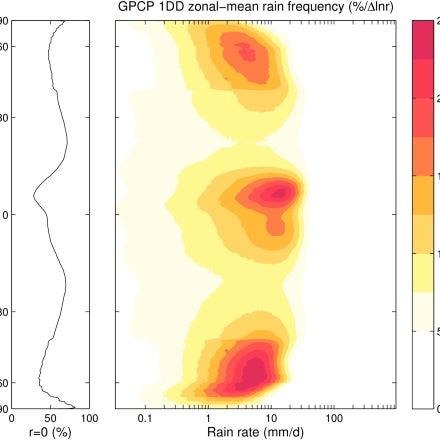
|
GSFC (NASA): G. Huffmann, D. Bolvin, R. Adler | Global | to | Daily | 1x1 | netCDF, binary | station rain guage, satellite data |
839 |
| GPCP (Monthly): Global Precipitation Climatology Project | 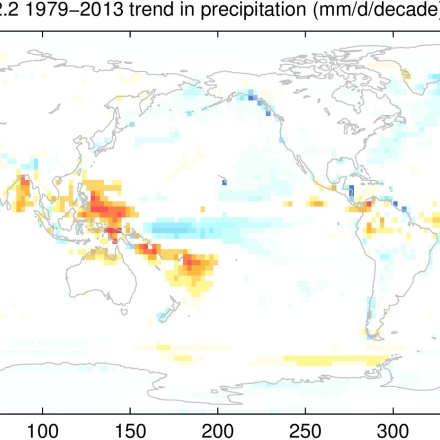
|
GSFC (NASA) / G. Huffman, D. Bolvin, R. Adler, JJ Wang | Global | to | Climatology, Monthly | 2.5 x 2.5 (monthly) | binary, netCDF | rain gauge stations, satellites, and sounding observations |
655 |
| HadISD: Sub-daily, non-interpolated weather station data | 
|
Met Office - Hadley Centre | Robert Dunn | Global | to | Sub-daily | netCDF | 1206 | ||
| HOAPS: Hamburg Ocean Atmosphere Parameters and Fluxes from Satellite Data | 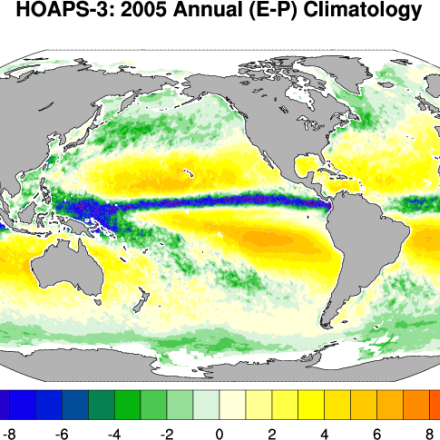
|
A. Andersson (DWD), S. Bakan (MPI), K. Fennig (DWD), C. Klepp (Uni. Hamburg) | Global | to | Climatology, Sub-daily, Monthly, Pentad | 0.5 x 0.5 | netCDF | SSM/I passive microwave radiometers, except for the SST, which is taken from AVHRR |
746 |
| IMERG precipitation algorithm and the Global Precipitation Measurement (GPM) Mission | 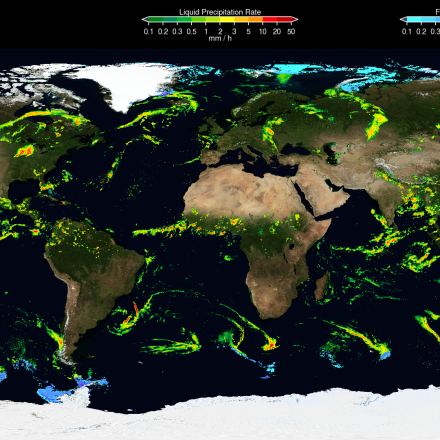
|
NASA & Japan Aerospace Explorartion Agency | Global | to | Sub-daily, Daily, Monthly | 0.1x0.1 | GeoTIFF, HDF, netCDF, OPeNDAP | multiple bands (microwave, IR, visible) from multiple satellites |
1058 |
| Livneh gridded precipitation and other meteorological variables for continental US, Mexico and southern Canada | 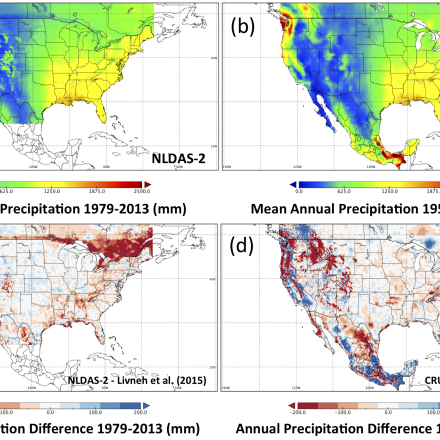
|
Dr. Ben Livneh, University of Colorado | North America | to | Daily, Monthly | 1/16 degree (~6 km) | netCDF | GHCN-daily; Environment Canada; Servicio Meteorológico Nacional (Mexico); NCEP-NCAR Reanalysis |
1162 |
| NLDAS: North American Land Data Assimilation System | 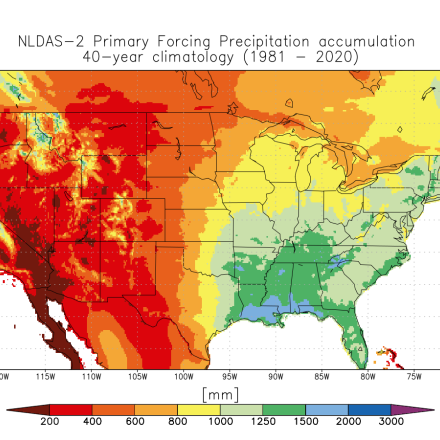
|
NASA, NOAA, Princeton, U. Washington | North America | to | Climatology, Sub-daily, Monthly | 0.125 (224 points latitude x 464 points longitude) | GRIB, netCDF | observations & model reanalysis |
912 |
| PERSIANN-CDR: Precipitation Estimation from Remotely Sensed Information using Artificial Neural Networks - Climate Data Record | 
|
UCI Center for Hydrometeorology & Remote Sensing (CHRS): S. Sorooshian | Global | to | Sub-daily, Daily | 0.25x0.25 | binary, netCDF | directly: IR satellite, indirectly: NCEP stage IV precipitation data, rain gauge, PMW satellite data |
845 |
| PRISM High-Resolution Spatial Climate Data for the United States: Max/min temp, dewpoint, precipitation | 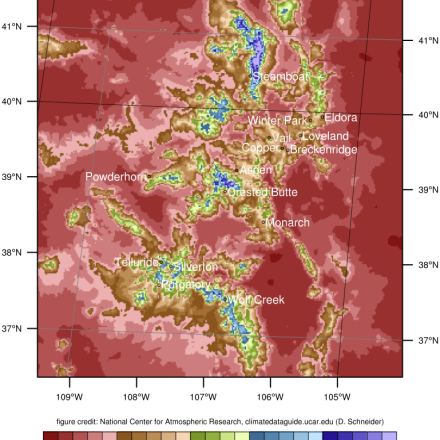
|
Oregon State Univ (USDA, NOAA)/ C. Daly | North America | to | Climatology, Daily, Monthly | 4 km, 800m | ARC/INFO ASCII GRID, netCDF | 816 | |
| TerraClimate: Global, high-resolution gridded temperature, precipitation, and other water balance variables | 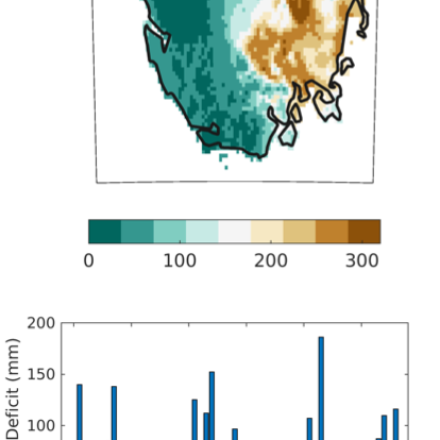
|
John Abatzoglou, University of California - Merced | Global | to | Climatology, Monthly | ~4 km (1/24th degree) | netCDF | WorldClim, CRUTS4.0 |
1163 |
| TRMM: Tropical Rainfall Measuring Mission | 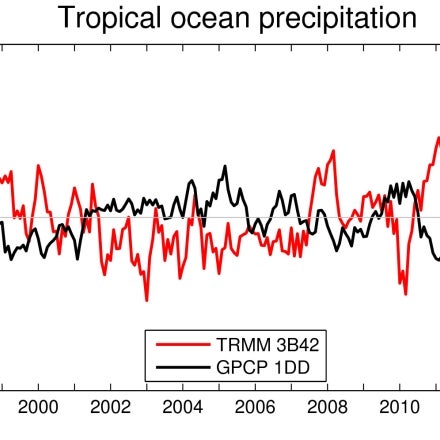
|
NASA & Japan's National Space Development Agency | Tropics | to | Sub-daily, Daily, Monthly | 0.25x0.x25 , ~40S - 40N and ~50S - 50N | HDF, netCDF | satellite microwave and IR; gauge (for calibration) |
672 |